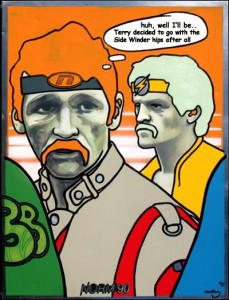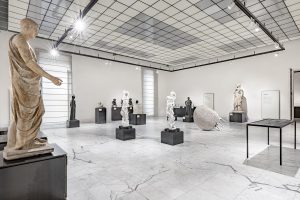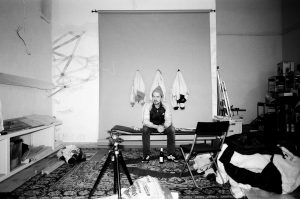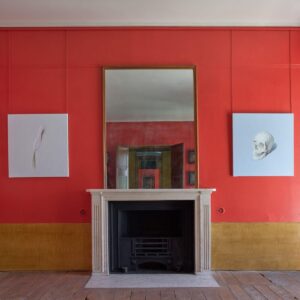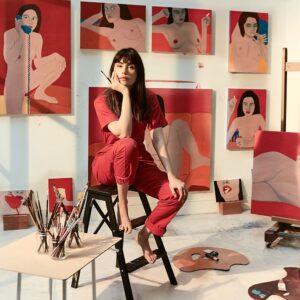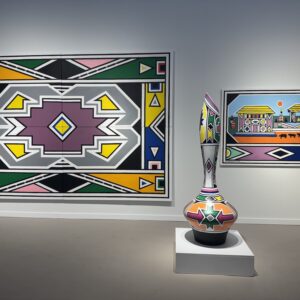1 When did you start to make art?
I was in my teens, fifteen perhaps? I had no concept of context back then but I took to painting like buttering bread. My first ever painting was actually quite good and still hangs in pride of place on my mums wall. The second was utter tripe.
2 How did you evolve into a professional artist?
I left the nest at seventeen and spent a year doing a foundation art program in the neighbouring district of the Wairarapa, New Zealand. By this stage I had figured out that art was for me and so I set about sponging up whatever influences I saw fit. I was thankfully guided in a practical sense by one of my tutors, Trevor Morris, who reasoned that the best platform for me to approach art from was design school in Wellington. There I learnt the basic fundamentals to one of my now favourite past times, typography, and also was trained in a military fashion to develop creative processes which still influence me today. Being young though, I was some what distracted. It wasn’t until I had finished my studies and settled into a communal art studio in downtown Wellington that I began to talk to an audience, so to speak. Having a design background allowed me to work commercially as a freelancer, but it only served as a means to prop myself up financially. After a few years my art started to sell more frequently and so the need to work evaporated.
3 What drove you to make art as a professional vocation?
It wasn’t a conscious decision I don’t think. I wanted to make art. The profession aspect was more a case of not wanting to spend my time doing stuff that bored me. Form follows function or something, my arm would spontaneously start scribbling.
4 Explain your inspiration?
Um, lets see.. I don’t know to be honest. People I guess and social issues. I’m reminded every once in a while that certain things exist that are undeniable, absolutely real, and then there’s apathy and complacency. For me, art itself inspires me to look beyond my immediate circumstance and try to make sense of things.
5 In what way does your inspiration transform into ideas?
The ideas are usually stumbled apon, they appear to me sometimes as if I’ve tripped over them if my thoughts, or for the sake of projecting an analogy; ‘like a blind person recognising a familiar pavement with their stick.’ The subject can vary, but usually it’s the application of an idea that gets me going. Then I’ll blow as much mental air into my discourse as possible and try to envisage it’s tone. My wife would tell you that if she catches me zoning out on a blank wall, even if it’s in the middle of a hot date, that it’s all over. I’ve gone over to the other side and won’t be back for at least a few hours.
6 From Ideas to production of art – how? And why?
The canvas is key to the process. I work with found objects such as car bonnets and fridge doors. I like things that have a certain inherent character, a mood of their own. I’ll spend some time with them and familiarise myself with the imperfections. Then it’s a case of either marrying an existing idea to the object or doing something bespoke. Practically speaking I work with paper templates, transferring typographical elements through stencils (generally not sprayed) and figurative elements are plotted via the cartoonists method of paper flipping. The paints I use are all oil based and so take longer to dry. Enamel work is mostly paint knifed on in a clinical manner, whereas under-painting is done loosely yet studiously. Some of the paints I use take a while to dry so I tend to work on at least three or four pieces at any one time.
7 Could your ideas be portrayed in any other medium? If so which?
Possibly, you could perhaps do enlarged photographic prints of my tin can appropriations, that might work. Or you could paint the whole ensemble from scratch as a realism piece, although for me I wouldn’t see much sense in that.
8 Which artists would you most like to blatantly rip off?
None, not intentionally at least. But in a way everyone is an artist to a degree, even if it’s just the way they hold their own at the bus stop for example. Doing a portrayal of that moment is still borrowing certain elements of someone elses artistic expression.
9 Why is your art made?
It’s more a case of recycling, redirecting found objects from the scrap yard onto clean dry walls. I have friends in the art world that side with the conceptual school of thinking and they tend to argue that digital art is under-rated and that painting takes up too much of the art pie. I agree to certain extent so long as the digital aesthetic is rooted in the digital domain – vector animation for example. But if it’s digital art that’s trying to mimic applications such as painting then I don’t think that it can ever really compete with something which is one of a kind.
10 What does being an artist mean to you?
Being an artist is about entertaining an audience. For me, being an artist is not about indulging my own personal matters, it’s about aspiring to engage peoples minds. Artists, be they musicians, writers or what have you, are accountable for the collective intellectual health of our society.
11 Are you happy with your reasons for making art? i.e Are there any trade offs that make life hard?
I sometimes think that I’m missing out on life experiences. I spend so much of my time slaving away in my studio that I often don’t have the time to have a proper social life. See more live music etc. I’m quite happy to miss out on watching tele mind.
12 When does your art become successful?
For me it’s when my friends who I consider to be my contemporaries, give a piece the nod. Most people will offer up a ‘that’s great’ or something to that affect out of politeness. But there’s a select group of people whom, over the last decade, have become my constructive criticism council. It’s expected of them to give it to me straight and vice versa. If the palet is chaffed or the kerning isn’t naïve enough then I want to know. If an exhibition washes with them then I’m happy, sales are irrelevant. (although they do help to pay the bills)
13 What is art?
Art is art you know. Like in art it’s the art that is the art.
15 Who prices your work? And how is the price decided upon?
I price my work myself. The most important thing to remember with pricing art is never to devalue it I think. If you set a price for a piece, you should never go below that margin, even if you feel very poor, or else you’re effectively devaluing all of your work. Size tends to dictate my price range for the most part, but things such as how well it’s executed definitely have an influence. The standard should ideally be consistent, so if a piece isn’t landed quite right then it should probably be pulled from the series. Remove all fowl lemons, abstinence is the way to the future!
16 What is your next; move,project,show etc?
Not sure. I’ve just come out of a two and a half year stint. Quite enjoying having no specific agenda in play for now.. been getting around to a few bits and pieces on the ‘to do’ list, fixing up my old mule of a website for example.
17 What are the pros and cons of the art market?
An obvious con of the art market at present is perhaps the extent to which impulse buying has suffered, due to the lack of expendable cash that’s around. Artists such as myself depend on the occasional impulse buy, it’s like our bread and butter money.
I do quite like this business of digging in mind you.. brings about a few fits of righteousness within the art world. Quite looking forward to the prevailing winter season, we’re in for a few treats I’m sure.
18 Which pieces would you like to be remembered for?
I would like to think that it would be whatever my most recent work was. This is true for the moment atleast. (quite fond of pieces such as ‘Mend a Drape’ and ‘Lolled n’ Smarten’) It would be a tiresome affair this art biz if we knew that there was a ceiling of some description.
19 Any routine in making your artwork? If so what?
I refer to it as creative process, but yes a little. I sometimes feel like I’ve trained my hands to be like sheep dogs and I’m just supervising them as they go about what ever tasks I set them. It’s important to see certain paint applications through to the end without getting too distracted or following up on every whim. I do quite enjoy these monotonous moments as they allow me to sift through my subconscious and put things in order.
20 What has been the biggest break in your career?
No particular singular break comes to mind. I sold a painting to Keith from Prodigy last year. First celeb on the books!
21 Who has been the biggest influence on you?
My wife Jessamy, no competition there.
22 How many artworks have you given away and to whom?
Can’t remember, loads. My mum and fellow siblings were given paintings for xmas constantly through my earlier years, much to their delight (I think). I could never afford anything else. Now days they’re rationed to special occasions.
See more work and info here: www.spip.co.nz

